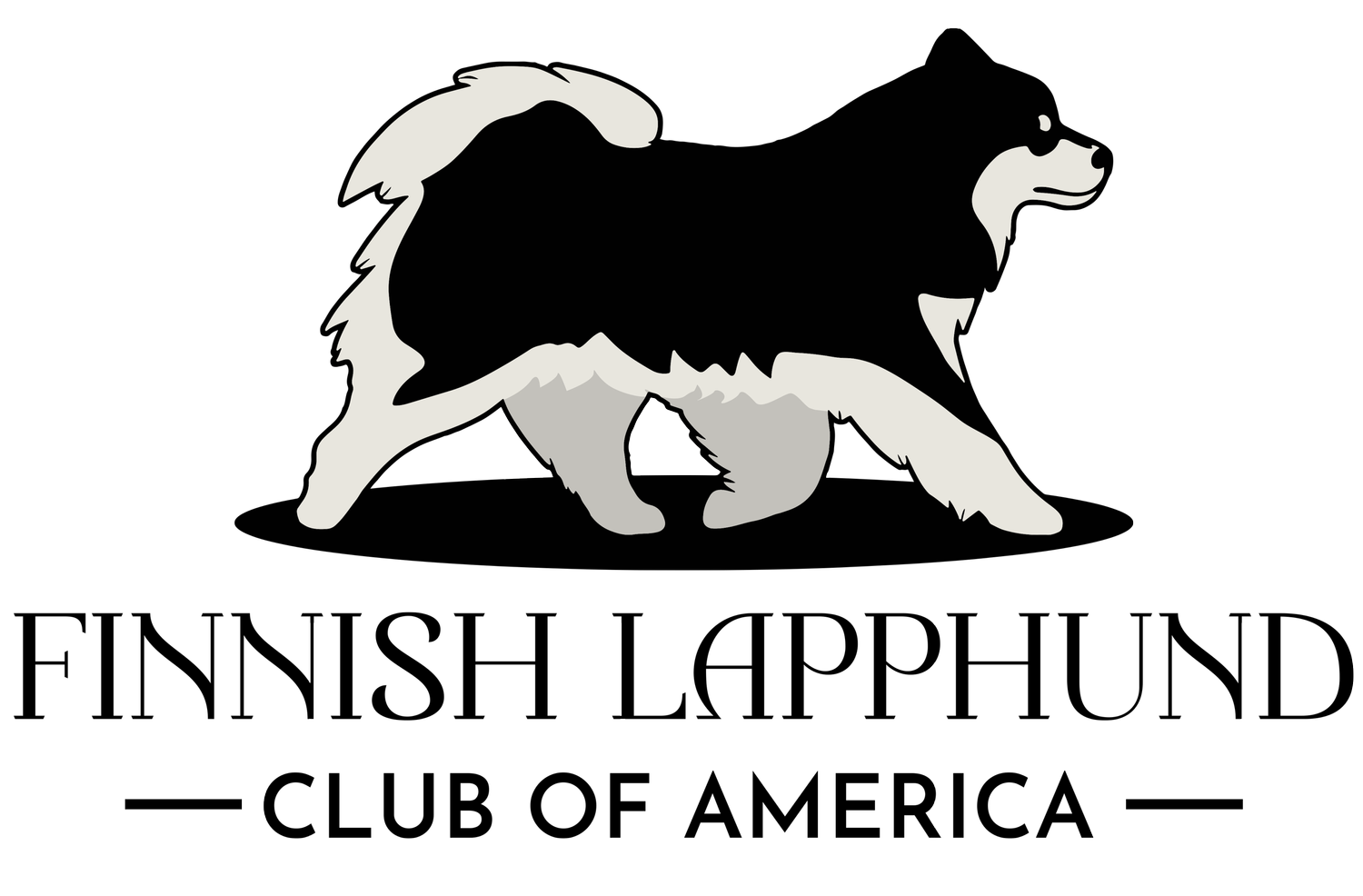
Hereditary Cataracts
Hereditary Cataracts
By Ashley Fallon
2006 Finnish Line Newsletter Article
Hereditary Cataracts (HC) are relatively rare in Finnish Lapphunds. According to a recent Lapinkoira magazine by Lappalaiskoirat r.y., the breed club in Finland, approximately 3.21% of Finnish Lapphunds in Finland, are affected with the disease.
Very little is known about this disease in Finnish Lapphunds. It is commonly found in older dogs, although that is not to say it couldn’t be found in young dogs.
The mode of inheritance is unknown, but it is thought to be some sort of a recessive gene.
Because the mode of inheritance is unknown, even in Finland, where the Finnish Lapphund is included in the PEVISA System, and therefore subject to strict health testing guidelines, there are no restrictions on the breeding of the parents or offspring of an affect dog.
In Finnish pedigrees. Dogs affected by Hereditary Cataracts have a notation of “HC” after their name or registration number. Dogs which are the offspring of affected dogs, or have produced multiple affected puppies, have a notation of “-“after their name or registration number.
In the United States, cataracts are diagnosed by a Canine Opthalmologist. If the results are clear, and owner applies for a CERF (Canine Eye Registration Foundation) Certificate, they are than posted on CERF’s website, http://www.vmb.org/cerf.html. A listing of Finnish Lapphunds who have been tested can be found by clicking CERF Certification Online Verification, and than search by name. Finnish Lapphunds are listed in the scroll-down list.
Dogs which have been certified clear by CERF, and been tested for orthopedic problems by OFA, (Orthopedic Foundation for Animals) also have their results posted on OFA’s website, www.ofa.org.
Editor’s note. Dogs with cataracts can and do live long and otherwise full and healthy lives. Many affected dogs will be partially able to see throughout their lifetime, however, there are some who will in time go blind. If your dog is diagnosed with cataracts, you should contact the dog’s breeder and inform them, as well as any mates the dog was bred to, and owners of any offspring the affected dog produced. If you own a dog who’s sibling or parent has been diagnosed with cataracts, be extremely cautious and consider well before breeding.

